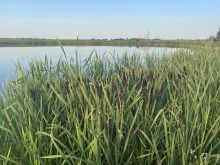To develop an expanded cattle-feeding sector in Saskatchewan, the beef industry requires an attitude adjustment and some favorable provincial government policies, agricultural economist Bill Brown concluded last year.
A study by the University of Saskatchewan economist, which compared cattle production in Saskatchewan and Alberta, was commissioned by the Saskatchewan Beef Industry Committee and funded by Saskatchewan Agriculture and Saskatchewan Economic and Co-operative Development.
The report concluded: “Alberta has the momentum in beef cattle production, the track record, the equity capital and the attitude that Alberta should be the place where beef cattle are raised, fed and slaughtered. Saskatchewan needs to develop a similar attitude.”
Read Also

Europe holds promise for Canadian lentils
Pulse Canada is trying to help boost lentil consumption in Europe, which is already the fourth largest market.
It also argued provincial and municipal governments could help create a cattle feeding sector by lowering property, fuel and income taxes.
Saskatchewan agriculture minister Dwain Lingenfelter said the province is ready to deal
with the lack of growth in the province’s cattle feeding and slaughtering sectors.
“I think this is one area where we should be and can be doing a lot more,” he said. “We’re really, really going to be focusing on what more we can do and what more we should be doing.”
Brown’s study concludes that Alberta has had better irrigation infrastructure, more pasture and forage land, larger pools of equity capital and favorable government policies such as the Crow Offset payment, which was instrumental in the expansion of Alberta’s cattle industry. The province also has lower property, fuel and income taxes.
Use advantages
But Saskatchewan has some natural economic advantages over Alberta in feed costs and land prices. To develop a feeding sector, Saskatchewan must capitalize on lower barley, silage and pasture costs.
Brown’s findings are echoed by provincial cattle industry officials like Miles Anderson, chair of the Saskatchewan Beef Industry Committee, which includes members from the Saskatchewan Cattle Feeders Association, Saskatchewan Stock Growers Association and Heartland Livestock Services.
Nearly 62 percent of Alberta’s farm cash receipts are derived from the province’s livestock industry and 49 percent of the farm receipts come from cattle.
In Saskatchewan only 24 percent of farm cash receipts are livestock-related and 17 percent are derived from cattle. That shortcoming has become conspicuous during the current farm income crisis because there is not sufficient livestock income to offset plunging grain revenues.
The Saskatchewan Beef Industry Committee wants to change those numbers. It has commissioned three studies over the last two years and has drafted a comprehensive provincial beef strategy, which it pitched to Lingenfelter last month.
Anderson said taxation is a “huge” issue and one of the main impediments to a healthy cattle industry. He said lower taxes would free up more equity capital for feedlot investment.
Committee member Brad Wildeman agreed taxes will be the main item on the agenda.
“There’s a long list of taxes that we have that they don’t have (in Alberta),” he said.
He said Alberta spent more on developing the industry and attracting packers to the province.
In addition to addressing taxation problems, the beef strategy calls for the development of an agricultural venture capital fund in Saskatchewan, enhanced training for intensive livestock operations and a more favorable regulatory environment for feedlots, said Anderson.
Len Vogelaar, past chair of the Alberta Cattle Commission, said there is great potential for a healthy cattle sector in Saskatchewan but the province has a lot of catching up to do.
“They have a tremendous base for an expanded cow-calf operation,” he said.
“I think there’s even room in Saskatchewan for an expanded feedlot operation, but in some way they have to develop irrigation around Lake Diefenbaker and take advantage of the opportunity they have.”















